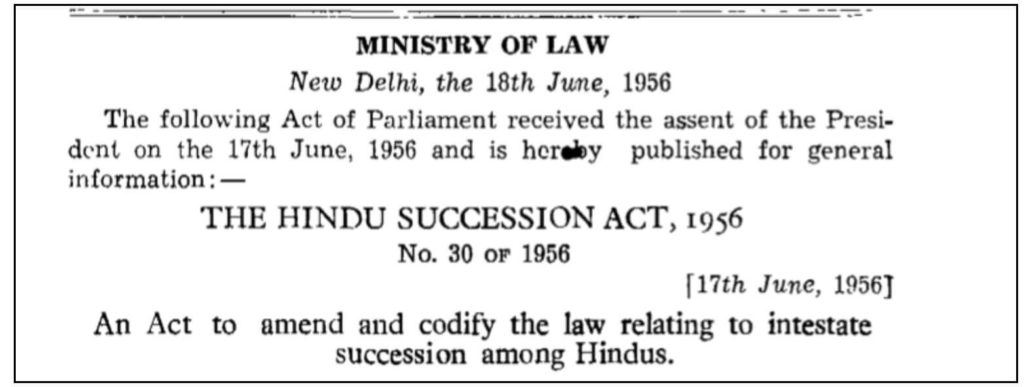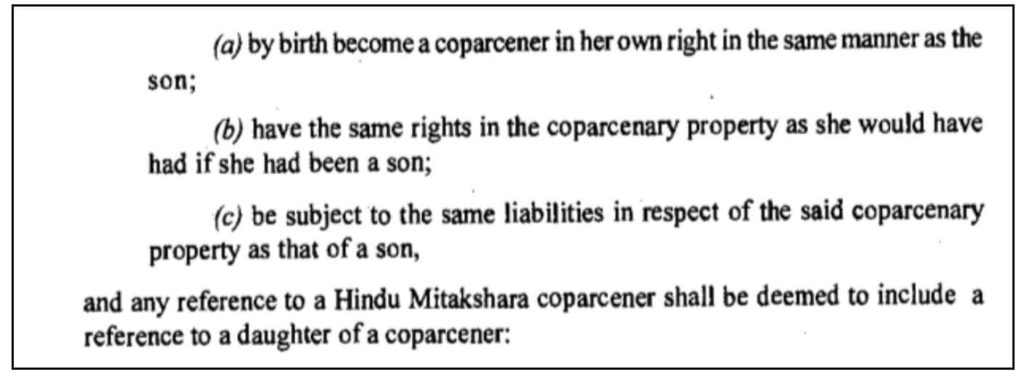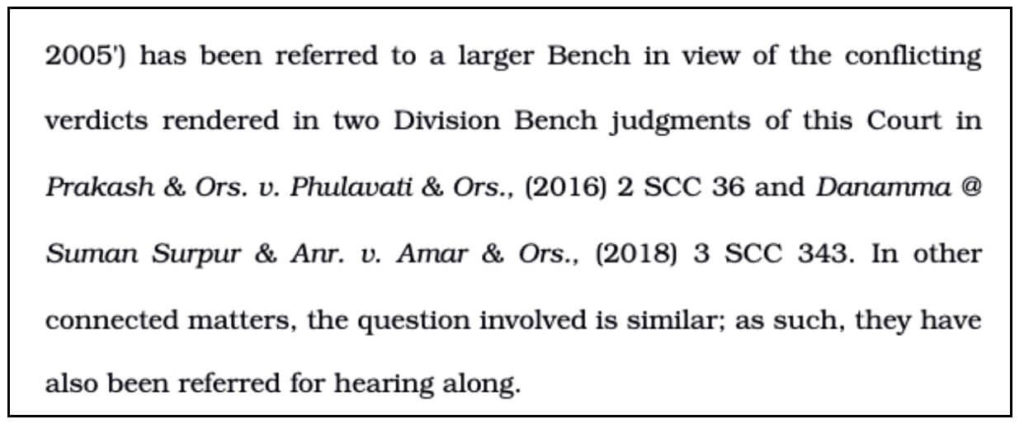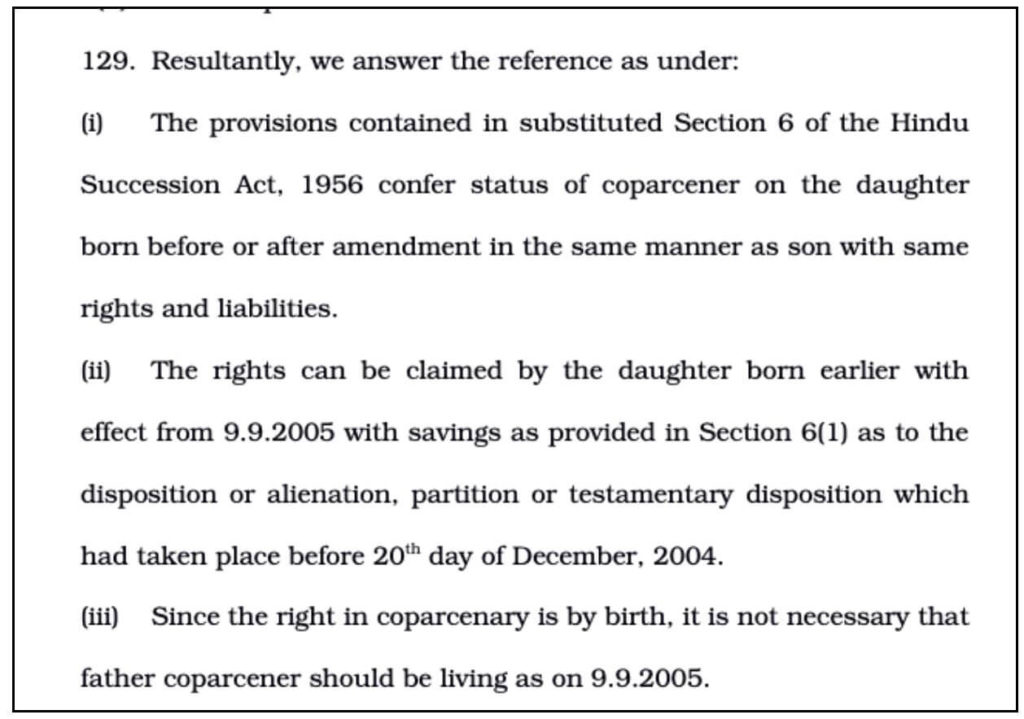The recent Supreme Court judgment cleared the air regarding Women’s right to ancestral property. In this story, we look at the evolution of the law in India for Hindus and rights of Women in inheritance across the world.
On 11 August 2020, the Supreme Court of India delivered a landmark judgement regarding the right of Hindu women to ancestral property. A three-judge bench headed by Justice Arun Mishra ruled that a Hindu Woman’s right to be a joint heir to the ancestral property is by birth and it does not depend whether her father was alive or not when the law was enacted in 2005.
The law being referred to is the Hindu Succession (Amendment) Act, 2005, which earlier gave women the right to be a coparcener (joint heir) as a male heir. The recent judgement is an extension to the list reforms brought in over the years in recognition of women rights. In this story, we take a look at the history and backdrop of this judgement, evolution of women inherence rights in India and also global precedence regarding property rights of women.
Hindu Succession Act, 1956 does not provide Women, right to coparcenary property
The initial effort towards streamlining succession and inheritance in India among Hindus was done through Hindu Succession Act, 1956. This Act provides a uniform system of inheritance and succession among Hindus.

This act abolished the limited estate of Hindu women, where-in she is given the absolute power to deal or dispose of any property that belongs to her. However, in this act, right of a female heir to a coparcenary is not recognized. As per Indian Hindu law, a Hindu Joint family consists of lineal descendants of a common ancestor i.e. male head and his descendants, including wives and unmarried daughters.
Coparcenary is a smaller unit, which owns a property and consists of a person at the top of a line of descent and his three lineal descendants (sons, grandsons & great grandsons). Coparcenary property has a co-ownership by this smaller group. Upon the death of a coparcener, his interest becomes merged with the surviving coparceners. The codified law of 1956 kept this position intact in Section 6.

However, it did contain a provision that if the deceased left behind a female relative (daughter, widow or mother) or any male relative claiming though such a female relative, the interest of the deceased would go to them by succession.

Hence, even the Hindu Succession Act,1956 which attempted at codifying the laws related to inheritance and right to property, did not address the conventional discrimination against women. Nevertheless, it did confer some limited rights regarding non-coparcenary property (in case of daughters) and to widows, whose right to succeed to a property was recognized at par with that of sons.
The 2005 amendment conferred Women equal right to coparcenary property
While amending the Hindu Succession Act-1956 in the year 2005, the Union government stated that the tenets under section-6 of the original act by excluding daughter from being part of the coparcenary ownership contributes towards discrimination on the ground of gender and also negates her fundamental right of equality guaranteed by the constitution. Therefore, an amendment was made to Section-6 to remove this discrimination and provide equal rights to the daughters as well.

This amendment came into force on 09 September 2005 and declared that a coparcener’s daughter would become a coparcener in her own right by birth and would have the same rights, had she been a son. However, this amendment came with a proviso that it would not invalidate any disposition of property by partition or will that had taken place prior to 20 December 2004 i.e. the day amendment was introduced in the parliament.

Even prior to this, five states in India – Tamil Nadu, Kerala, Andhra Pradesh, Karnataka & Maharashtra had amended state laws between 1986-1994 to provide daughters with equal rights over inheritance.
The current judgment was in light of variance in interpretation in different cases
Most of the laws are generally considered to be prospective. When Hindu Succession (Amendment) Act, 2005 came into effect, there were questions around whether it would apply to daughters born before 09 September 2005 or if they are born before that , would it be limited to those whose father (coparcener) through whom they would be inheriting the property was also alive on that day.
Few courts took the view that only a living coparceners daughter would get the benefit of the new law. As per these judgments, if a man died before 2005, the interest would not have passed on to the daughter since the amendment was yet to come into force. In Prakash Vs Phulavati Case of 2015, a two-judge bench gave a verdict that if the coparcener i.e. the father has passed away prior to 09 September 2005, his daughter would not have right to coparcenary property.
However, in another case, Danamma Vs Amar, another two-judge bench decided that the daughters involved in the case would get a share in the property, even if their father was not alive in 2005.
Since there were these differing views, a larger three-judge bench headed by Arun Mishra was constituted for another case of Vineeta Sharma Vs Rakesh Sharma.

The verdict of this larger bench upheld that the coparcenary status of daughter is created by birth and is not dependent on whether the father was alive or not on the date the amendment came into force. A daughter would have the same status as a son as soon as she is born. This verdict lays to rest any doubts around interpretation of the amendment and whether any women can be left out due to prospective application of the law.

Women Inheritance laws vary Globally & have evolved over a period of time
The Inheritance laws for women vary across the world with strong regional and cultural influences. Even in few of the countries which currently have less gender – discriminatory laws, the inheritance laws have evolved over the period of time, with many of these societies not granting equal inheritance to women prior to 20th century.
Referring to a study, ‘Women, Business and the Law 2019: A decade of Reform’, an article published by World Bank states that only 45% of the economies in MENA (Middle East & North Africa) do not have discrimination in Women’s property & inheritance laws, while South Asia does relatively better with 55% of economies framing laws with less gender discrimination regarding property rights. However, these are way behind Europe, Central Asia and Latin American countries.

As per an article published by UNAIDS, among the developing countries, Latin America has comparatively less discriminatory inheritance laws for women. It has noted that even though South Asian countries have made some progress in aspects relating to women’s rights, there are still serious inequalities with respect to property.
In most of the Middle East and North African countries, the law is governed by Sharia law.
As per World Economic Forum’s data in 2017, only 20% of the land across the world in owned by women.
In United States, it was only in the Twentieth Century that more equitable laws regarding inheritance of women were framed across the states. The inheritance laws in US is a State subject and it varies. In a Nordic country like Norway, there is no demarcation in the inheritance laws by gender of children.
Featured Image: Inheritance laws in India


